Fruit Skin Glazes by Homer Laughlin
LaurelHollowPark.net, an informative website created and
maintained by Mark Gonzalez. Copyright © 2009-.
|
|
In early 1941, Sears and Roebuck approached the Homer Laughlin China Co. about producing a line of solid colored dinnerware. Sears had offered several such lines in the past including Granda by French-Saxon and Valencia by Shawnee. In March 1941, work began on modeling a new shape and producing new colored galzes.
The glazes developed for the new line were speckled and would become known as "Fruit Skin Glazes." The new coupe shapes had an embossed rope decoration towards the edge in the same manner as the Kraft Blue shape. The first pieces modeled for this line were a plate and a casserole. Unfortunately, no sketches were made for any of the shapes in the modeling log. On March 6, 1941, designer Frederick Rhead notes: First molted glazes out on rope Casseroles and plate - very promising. More shapes were created and on March 12, Rhead makes the following entry:
McDonald [from Sears] and J. M. Wells in. Both approved. Favorable toward Fruit Skin Glazes. Also discussed new shape. They both like the rope pattern and covered cream soup. Saw new skeletons of soup tureens... It seems definite we will have a new shape. I want to get away from the rope border and am working on leaf and other motif. J. M. Wells stated if we could not spray these glazes, they could be dipped.
| Six of the ten speckled glazes for the Fruit Skin Glaze line |
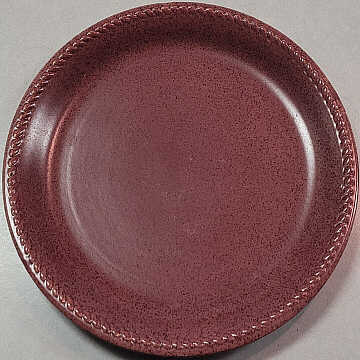
glaze # 4904 |
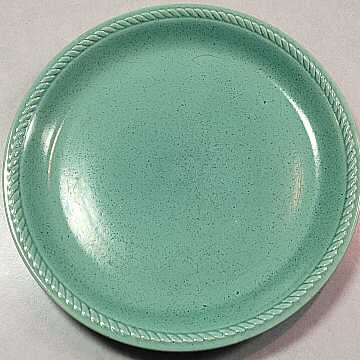
glaze # 5716 |
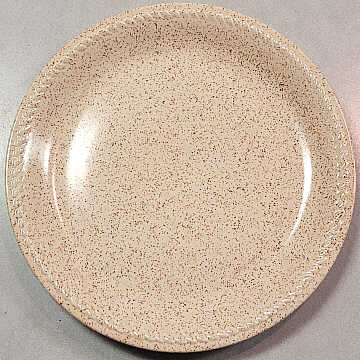
glaze # 4915-50 |

glaze # 5793 |
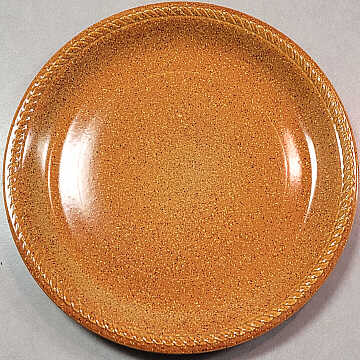
glaze # 7023 |
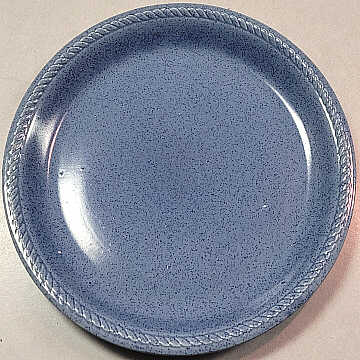
glaze # 4874-2 |
Work proceed with developing new shapes and more glazes. Rhead notes a blue and salmon as new glazes, but that the specks had to be reduced so that when applied to smaller items, they will be proportional. Sketches of hollowware were drawn up on March 19th. Rhead describes these as "globe" shape casserole, sugar, and creamer. The next entry, dated March 22, 1941, foreshadows the fate of Fruit Skin Glazes:
Letter from Sears (McDonald) to the effect that we should work on a cheaper glaze effect than Fiesta. McDonald likes new glazes... want the best thing we ever did at Syndicate prices. Hope this does not spoil the line as planned for the general trade. Have been wondering what to do to meet this lower cost range.
Development continued on the special glazes and the doubt from the previous journal entry seems to be put aside when Rhead notes on March 28th: J. M. Wells likes new glazes. Will make for Sears & Roebuck..
On May 21, 1941, Rhead wrote of more optimism with the new line:
J. M. Wells up. Said we would make full line of colored glazes. Mr. Mash said the glazes were exceptional and should be successful. Also that the shapes "Tree Platter," Divided Baker, etc. would help to sell the ware. Not to be concerned about price of the new line.
From May to July, nineteen items were modeled for Fruit Skin glazes. Other lines were considered for Sears such as the Modern Farmer shape in the pastel colors from Serenade. In June, more trails of Fruit Skin Glazes were made on Modern Farmer and Swing. Samples from both lines were sent to Sears for approval. Ten more items were modeled, the last being a nappy at the end of October. One of the last times Rhead mentions Fruit Skin Glazes was on October 21, 1941: ...on "Fruit Skin Glaze" Relish and Snack Plates... concerned about production. Explained that these are planned as special items to meet California development, etc.
Sears never did carry the Fruit Skin Glazes line. In 1942, their catalog offered a line of solid colored dinnerware made by a California pottery. Never had HLC devoted so much time and resources into developing a line that didn't go into production.
There were at lest ten different speckled glazes (plus Century's vellum) tried out for Fruit Skin Glazes:
- maroon
- green
- beige
- yellow
- orange
- light blue
- dark blue
- rose
- purple
- brown
- vellum (no specks)
All of the pieces on this page are from the collection of The Fiesta® Tableware Company.
|
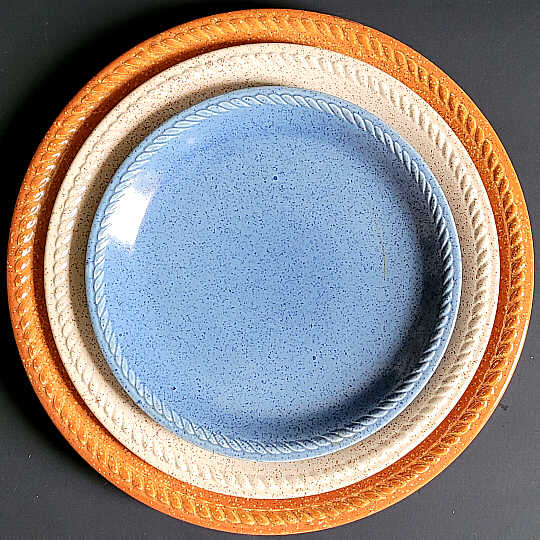
Three sizes of Fruit Skin Glaze plates |
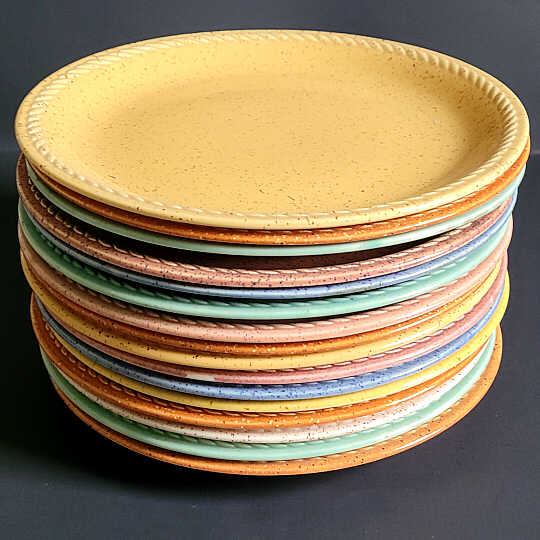
A stack of 8" plates in assorted glazes |
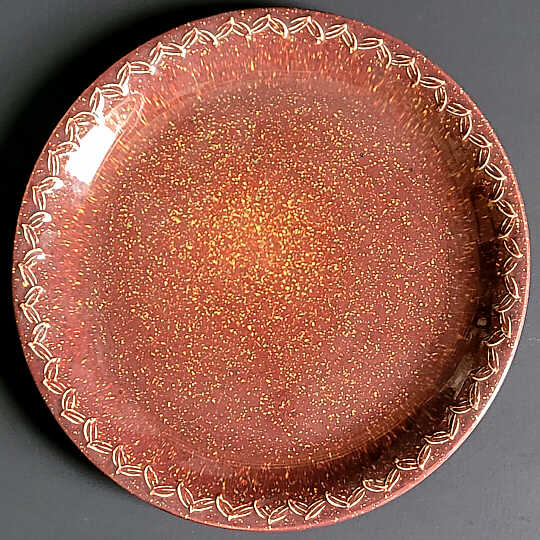
8" plate with alternate embossing, brown glaze |
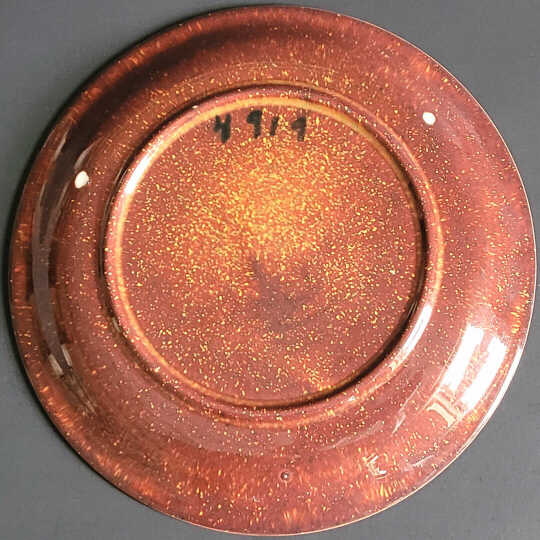
Reverse of brown plate, glaze # 4919 |
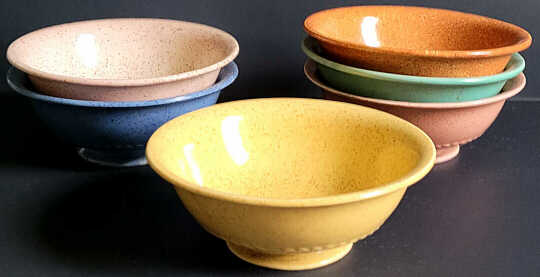
Individual desert bowls |
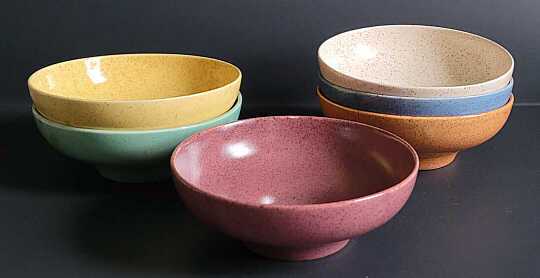
Individual salad bowls |
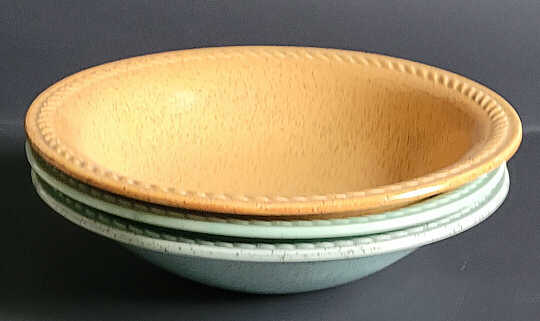
6" oatmeal bowls |
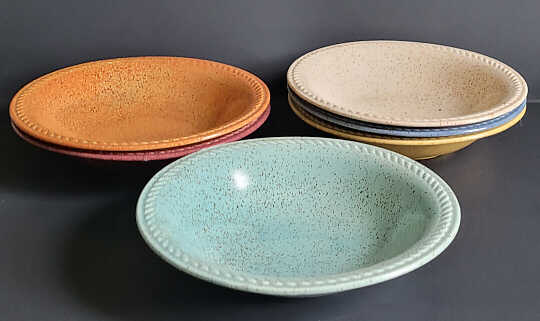
5" fruit cups |
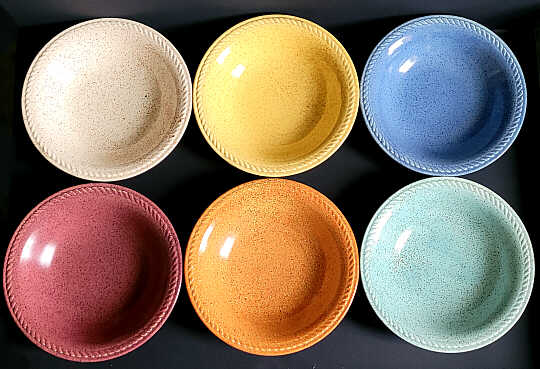
Six fruit cups, top view |
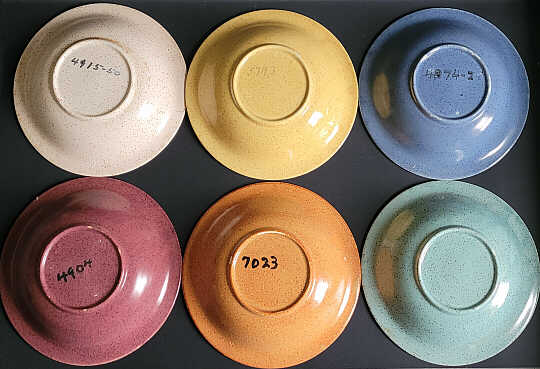
Six fruit cups, bottom view |
| Covered Onion Soups and Liners |
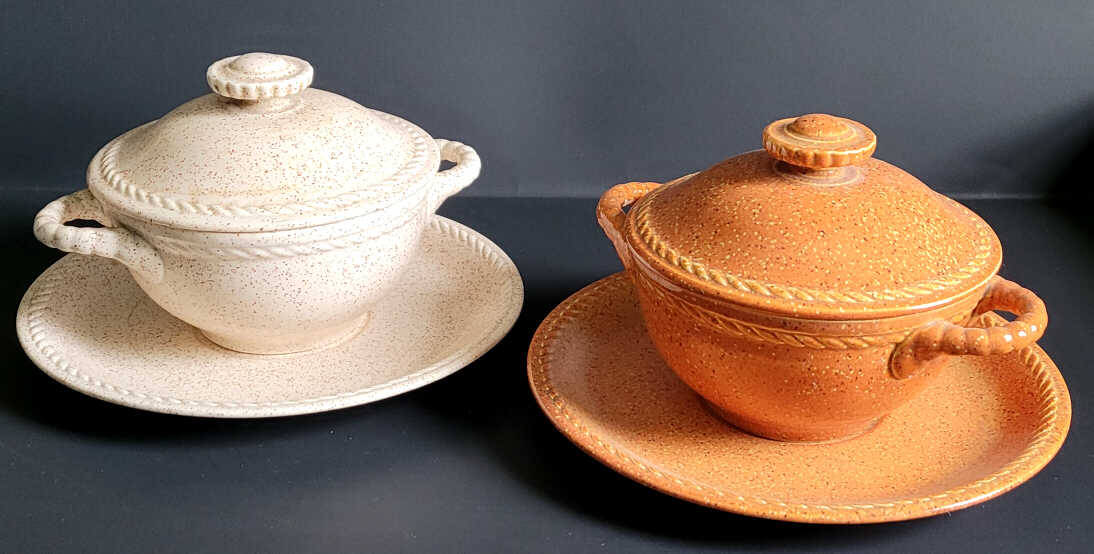
|
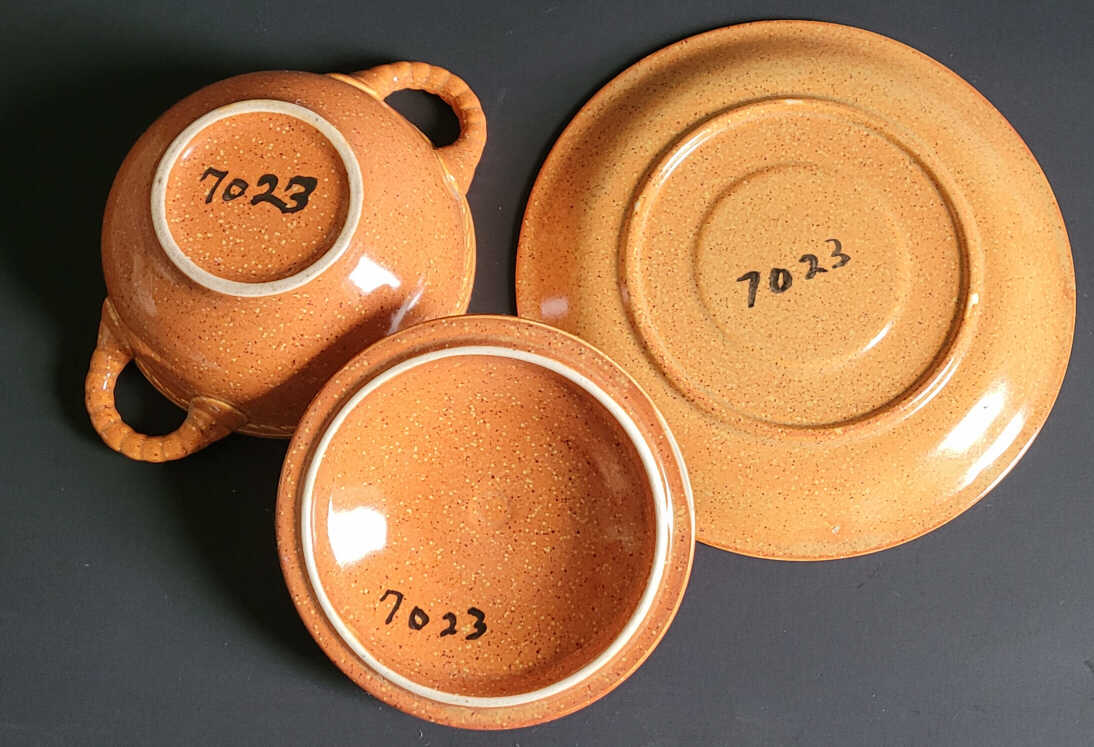
Glaze numbers on all three pieces of the orange set |
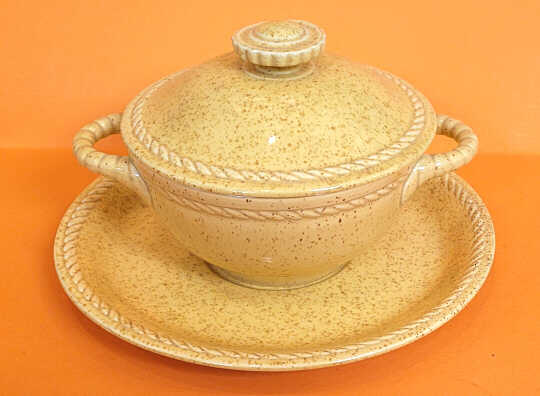
|
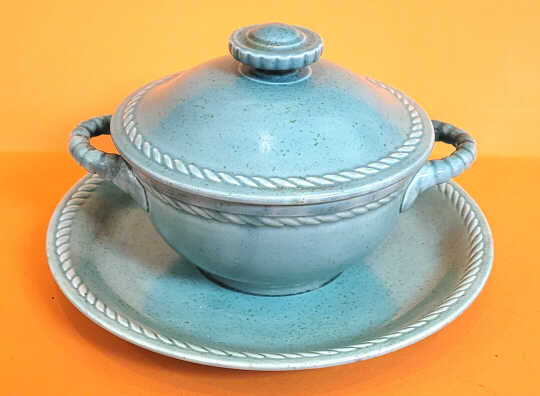
|
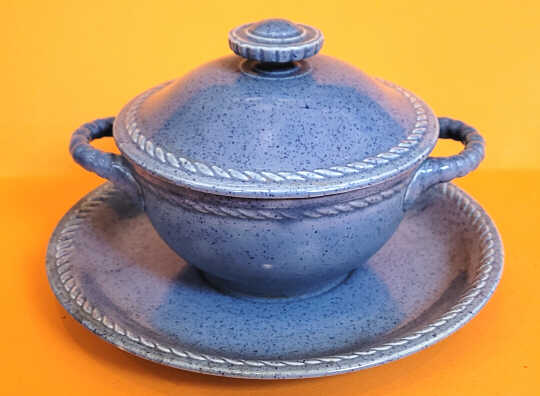
|
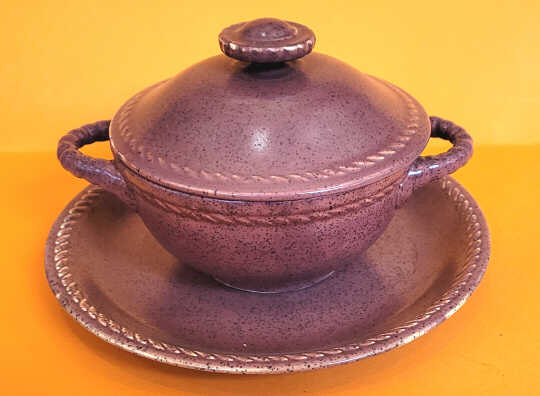
|
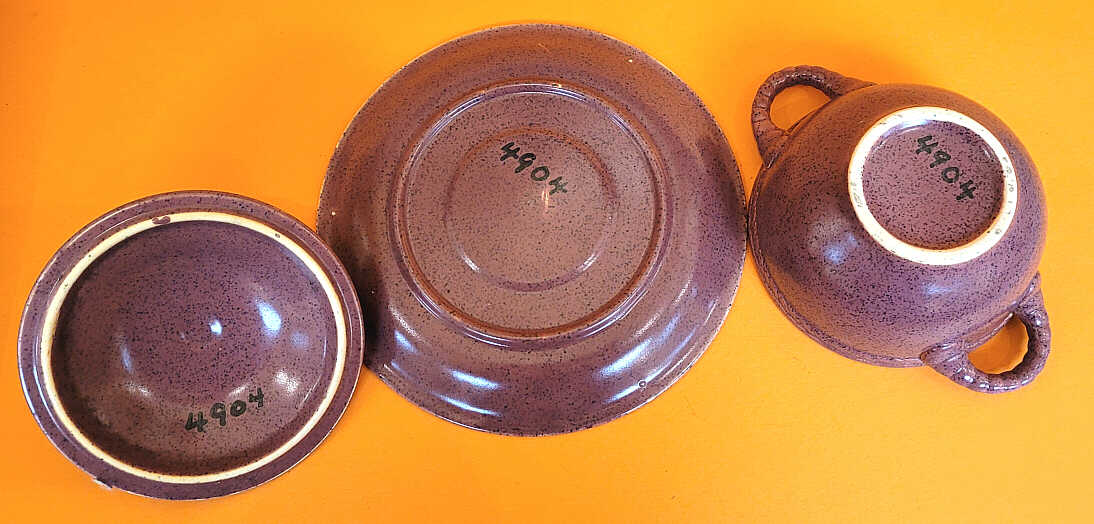
Glaze numbers on all three pieces of the maroon set |
| Teacup and saucer sets |
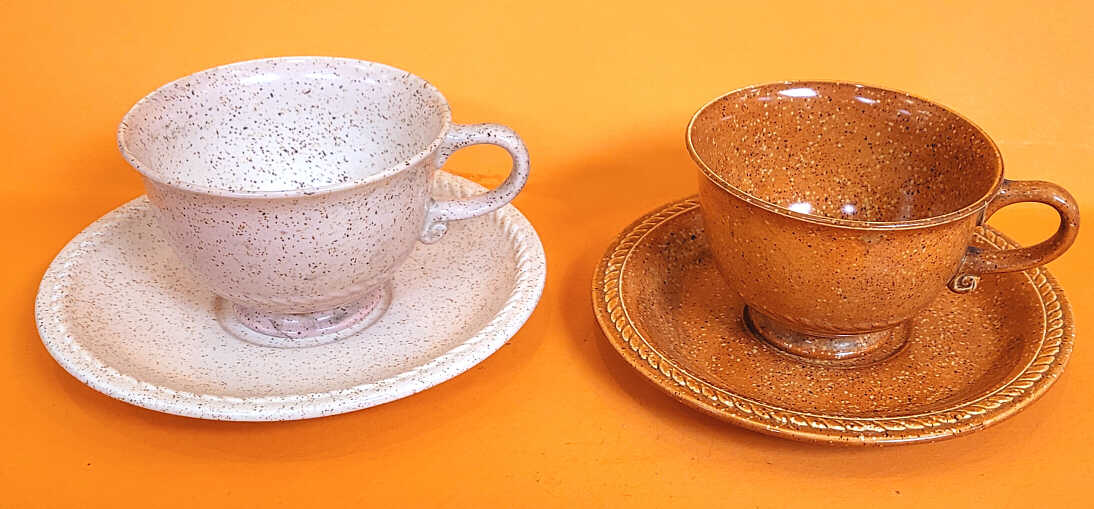
|
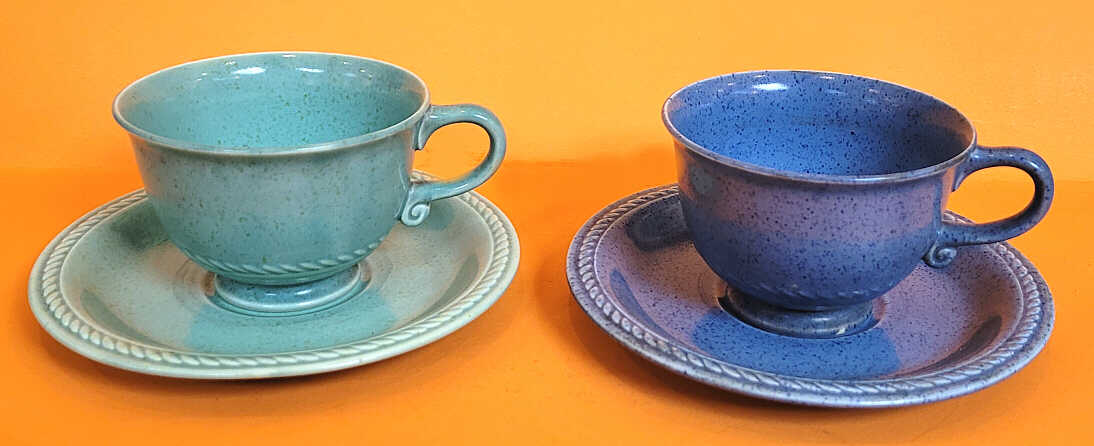
|
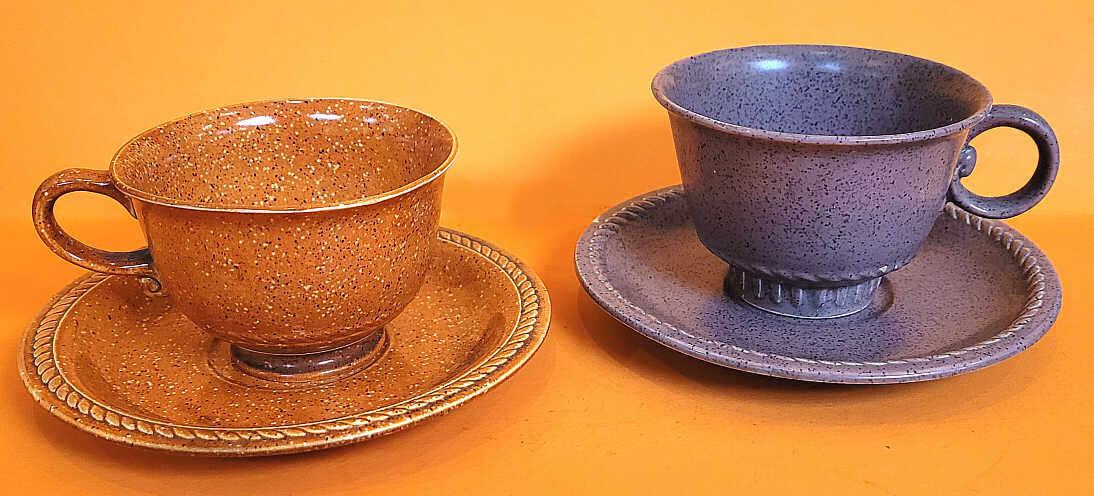
|
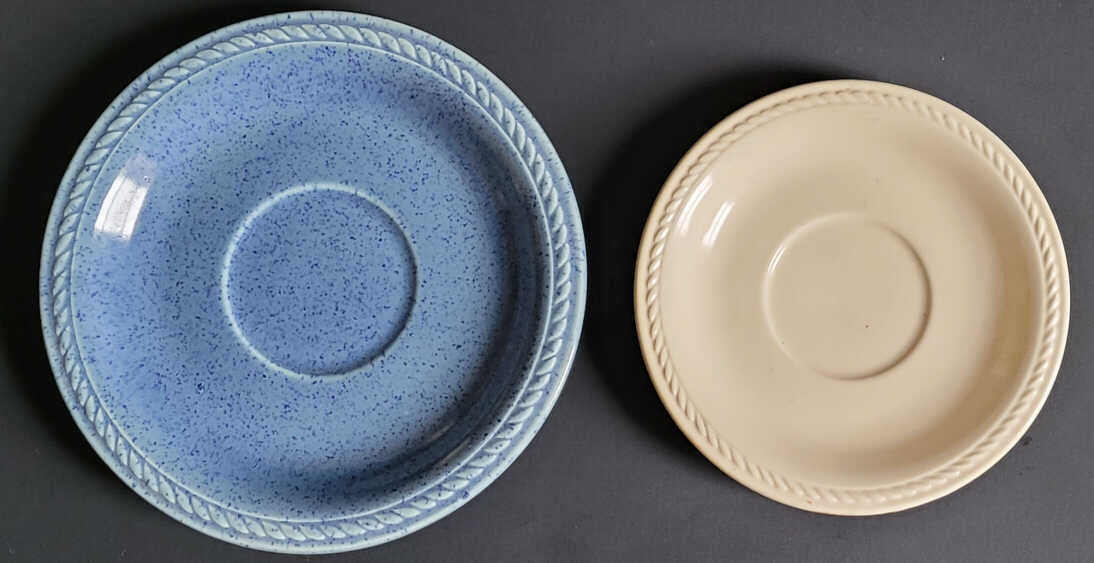
Teacup saucer on the left and a demitasse saucer on the right |
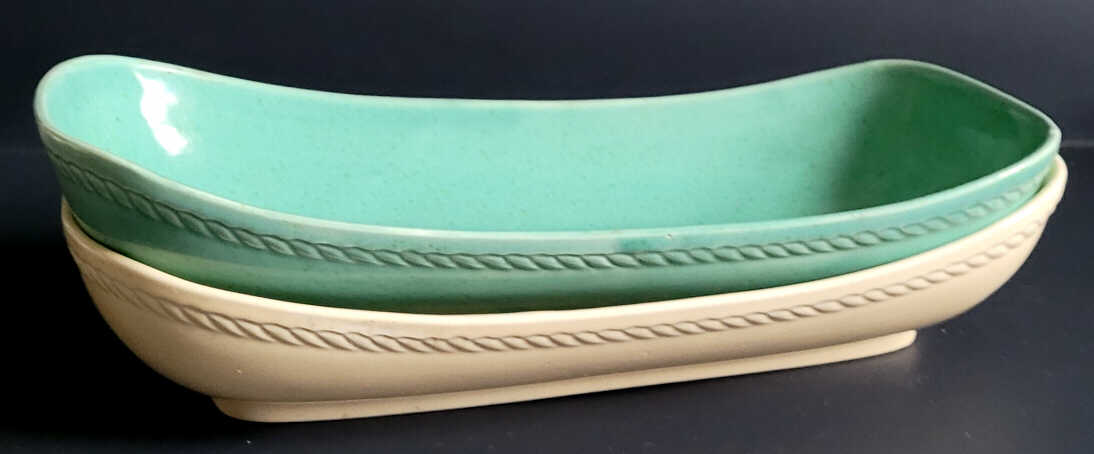
A pair of Fruit Skin Glazes cracker trays, model number 1618 |
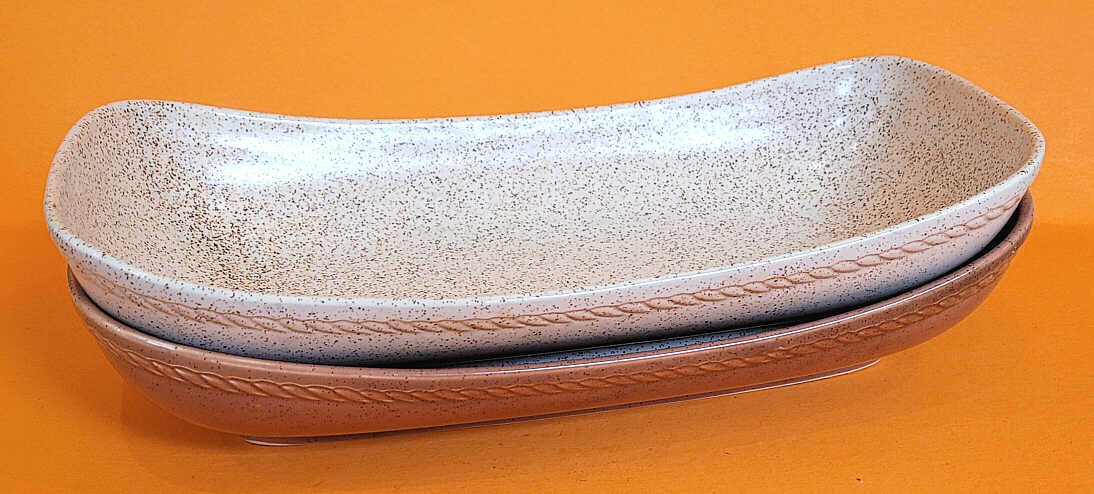
Fruit Skin Glazes cracker trays |
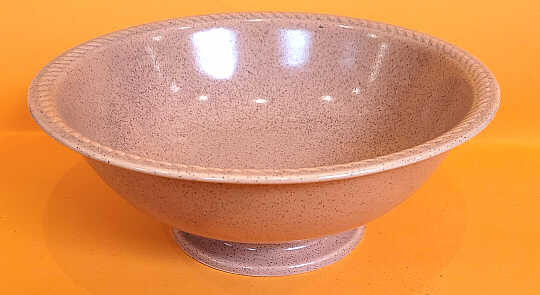
Footed Salad bowl, embossing on rim |
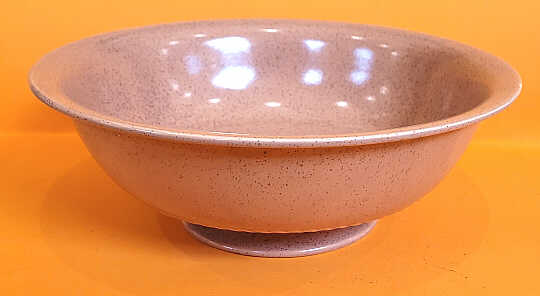
Footed Salad bowl, embossing towrads foot |
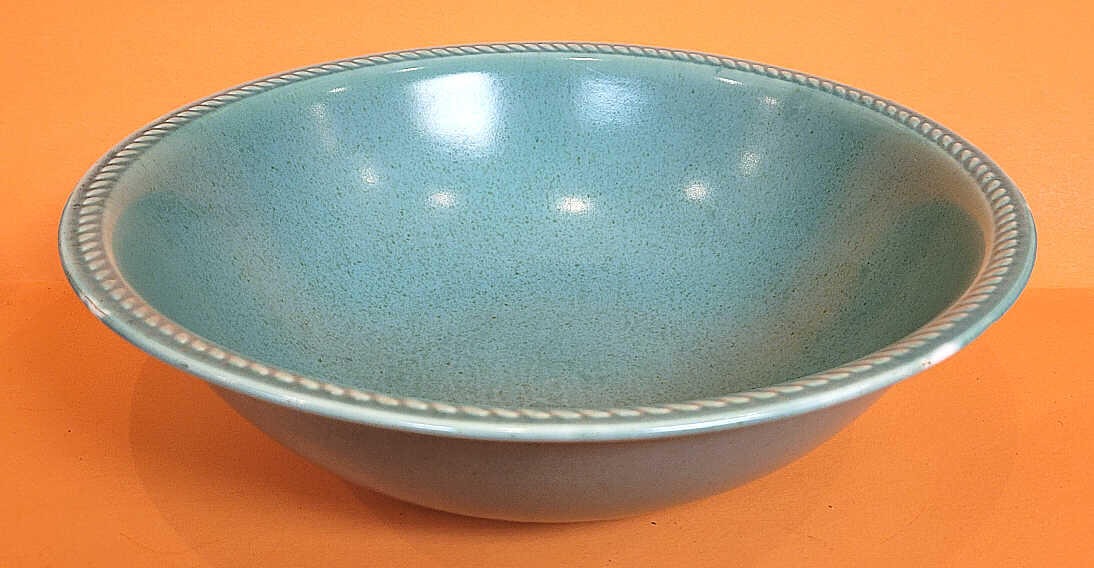
Large fruit bowl in green |
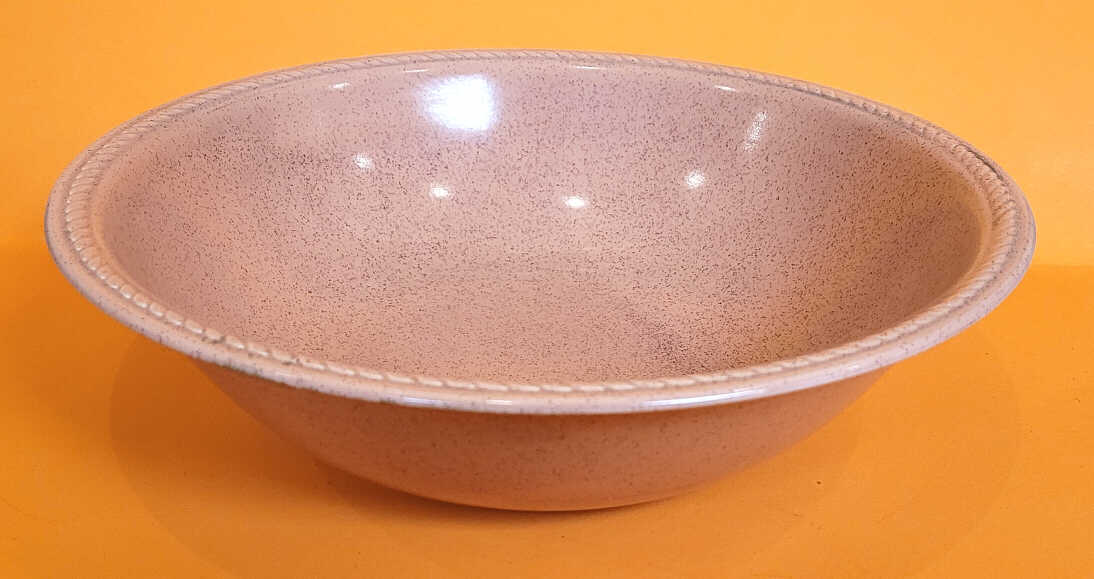
Large fruit bowl in rose |
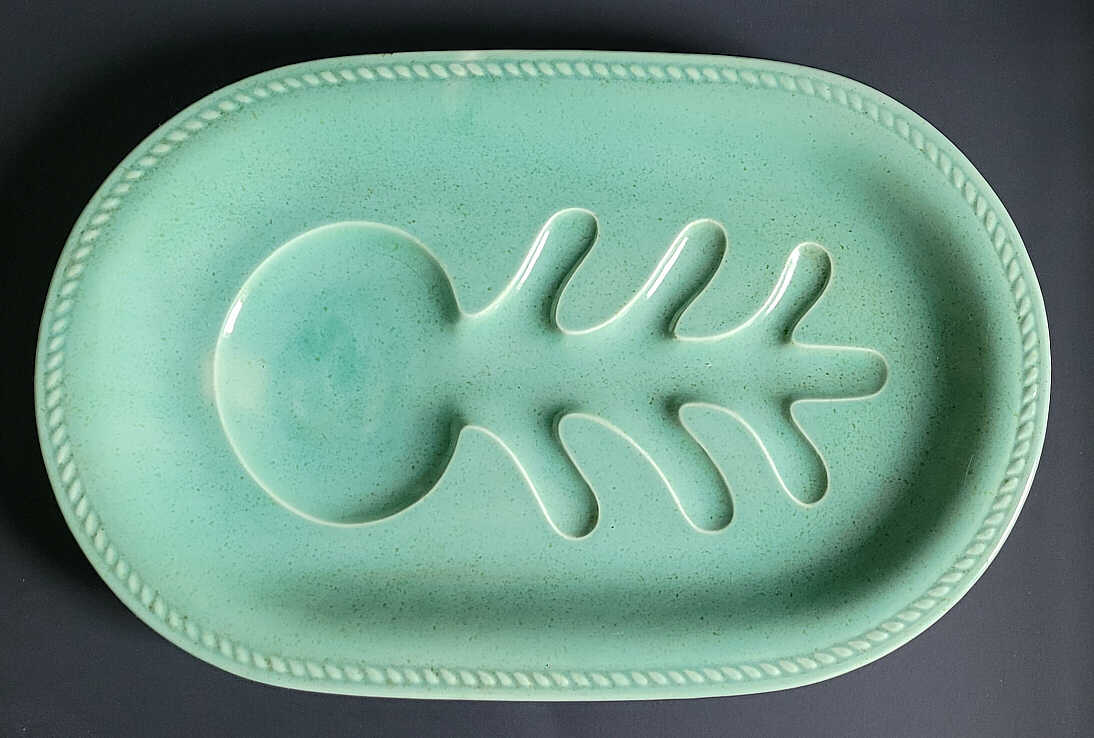
16" meat platter with tree in green |
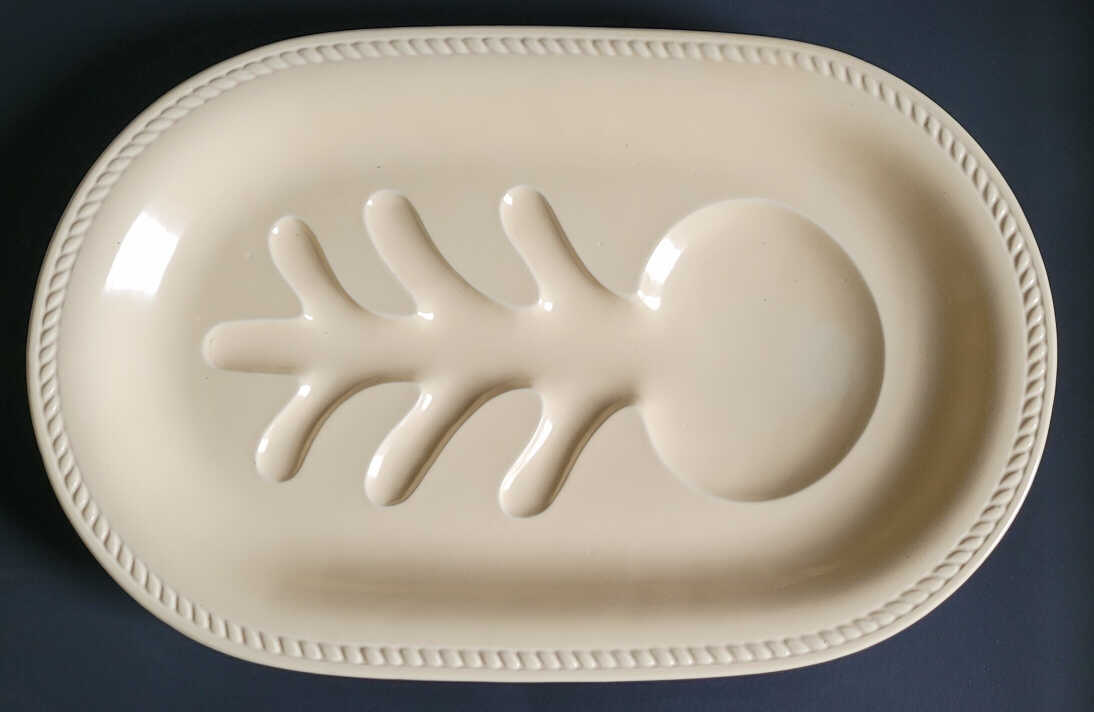
16" meat platter with tree in vellum |
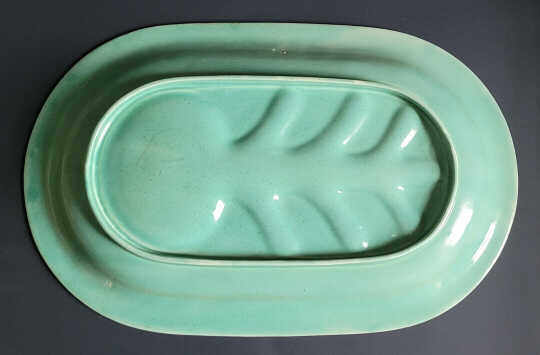
|
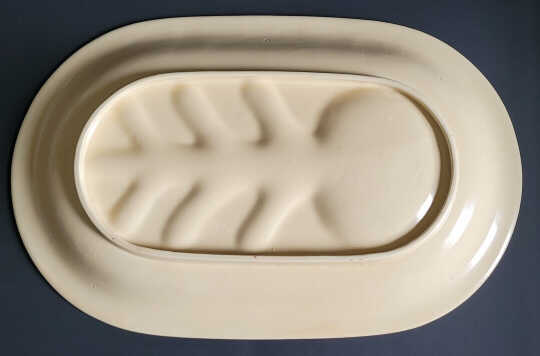
|
| Bottom views of the meat platters |
Shapes made for Fruit Skin Glazes in 1941:
- Casserole, round (covered cream soup)
- Covered dish, oval
- Plate, 8"
- Teacup
- Saucer
- Plate, 7"
- Handle Cup
(an extra for previous cup)
- Fruit Bowl
- Desert, 6 3/4"
- Plate 8", rope changed
- Plate 6"
- Bowl, Salad
- Desert, Ind.
- Teacup
- Saucer
- Tray, cracker
- Salad Bowl
- Berry bowl, with turned foot
- Berry bowl, with stuck on foot
- Teacup
- AD Cup
- AD Saucer
- Baker, dividied
- Baker, not divided
- Teapot
- Sugar
- Creamer (two styles of handles)
- Dish 16 1/2" by 10 1/2" (meat platter)
- Covered dish (casserole)
- Sugar
- Square relish tray
- Dish/tray (platter)
- Bowl
- Baker - straight sided
- Nappie
- Cookie jar
|
|
|